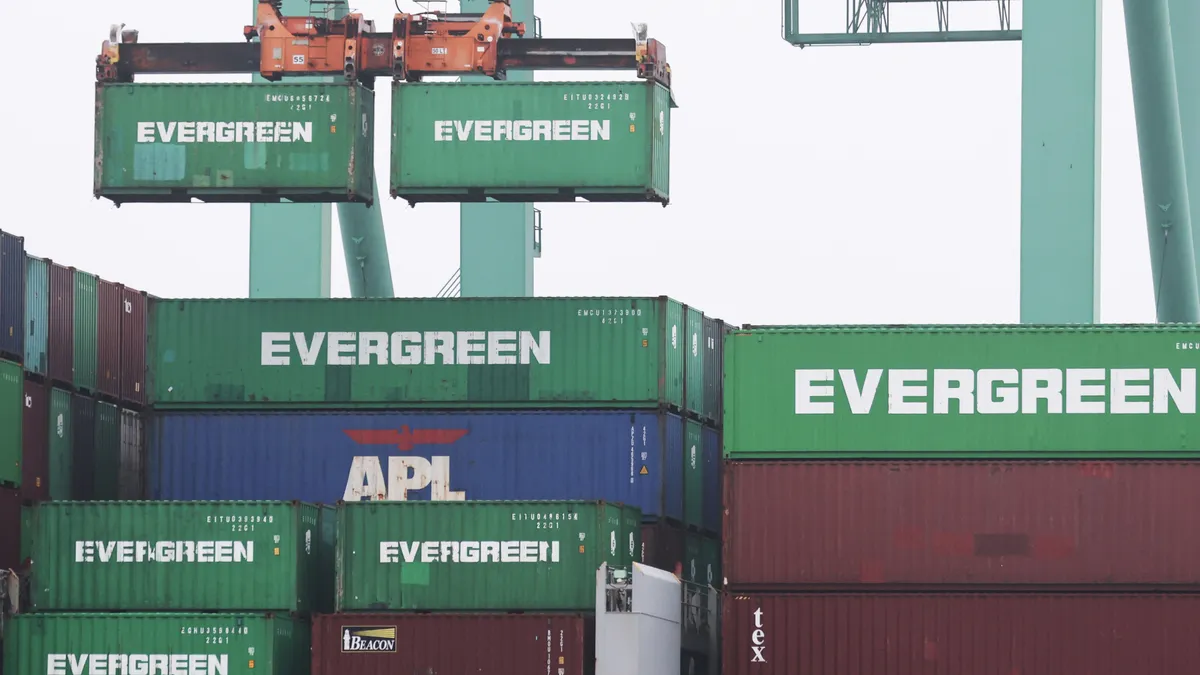Dive Brief:
- Cargo volumes at the Port of Los Angeles dropped precipitously as shippers pulled forward holiday orders and avoided the West Coast due to ongoing dockworker labor negotiations.
- The port handled 21.5% fewer containers last month compared to September 2021, which was the busiest month on record. The ship backlog off the Los Angeles coast has also “receded dramatically,” Executive Director Gene Seroka said in a Wednesday press briefing.
- Terminal congestion continues to be a problem, however, as tight warehouse space is pushing some shippers to delay pickup of cargo or using their containers as storage. “The average street dwell for chassis stands at 10 days,” said Seroka. “It should be four.”
Dive Insight:
Transportation delays and ongoing labor negotiations compounded shippers’ concerns for on-time holiday deliveries, pushing many to order earlier or avoid the West Coast entirely.
“Those traditional year end holiday products, think of toys and games, clothing, some footwear and other products that we would look to for those holiday gift items, have dropped precipitously compared to last September,” Seroka said, “mainly because they all came in much earlier in the summertime.”
More shippers have leaned on ports in the eastern Gulf Coast to avoid potential disruption if West Coast dockworkers and their employers are unable to come to an agreement, Seroka said. Negotiations have stalled, and members of the International Longshore & Warehouse Union have continued working without a contract since the deadline expired July 1.
Shippers are expected to continue rerouting cargo until a labor contract is in place, Seroka said.
Beyond uncertainty around labor negotiations, falling consumer demand has also prompted companies to trim purchase orders as they look to clear out their overstuffed inventories. Ports across the nation are expected to handle less freight this year, with retail imports forecasted to be 9.4% lower YoY in October according to the Global Port Tracker from the National Retail Federation and Hackett Associates.
Stalled demand and falling freight rates have pushed carriers to use blank sailings to help manage capacity and “stem the bleeding,” Alan Murphy, CEO of Sea-Intelligence, said in a statement.
Despite the lower demand, the Port of Los Angeles is still on track to have its second-busiest year on record. Seroka noted that volumes are likely to continue to be soft in October, and that the port will work to gain back the share of freight lost to other parts of the country.
“I'm pretty competitive and I don't want to lose a pound of freight to anybody else,” he said.














